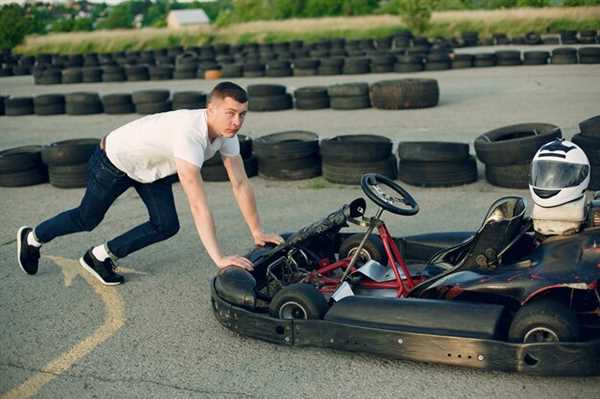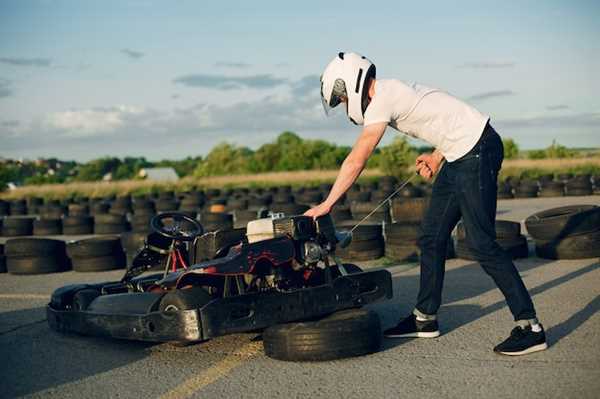
Utilizing an enclosed trailer is highly recommended to shield your vehicle from weather elements and potential road damage. This option provides a secure environment, reducing risks during transit. For optimal stability, ensure that your car is properly anchored using high-quality tie-down straps.
Choose a vehicle specifically designed for hauling, ensuring it has sufficient towing capacity. Verify weight ratings and distribution to maintain balance while on the road. Don’t overlook the importance of inspecting the hitch and safety chains before each trip, as these components are critical for secure attachment.
Implementing tire pressure monitoring can greatly assist in maintaining the condition of your racing machine during transport. Also, consider using wheel chocks to prevent any unwanted movement inside the trailer.
Prioritize regular maintenance of the towing vehicle. A well-maintained engine and braking system will not only enhance safety but will also improve overall performance. Planning your route to incorporate rest stops will help to mitigate fatigue and ensure both vehicles are monitored consistently throughout the travel period.
Selecting the Right Transport Vehicle for Your Race Car
Choose a trailer with adequate weight capacity to accommodate the specific model of the vehicle. A standard open trailer generally suffices for most race cars, but an enclosed trailer offers additional protection against weather and road debris.
Look for dual-axle designs for enhanced stability, allowing for smoother towing. Ensure that the transport vehicle has a compatible hitch system that meets the weight requirements. A truck or van should ideally have a towing capacity exceeding the total weight of the loaded trailer and car.
Consider the dimensions of the transport unit. Height is crucial when using an enclosed model to allow sufficient clearance, especially for cars with raised body kits or wings. Check the ramp angle for ease of loading; a low angle reduces the risk of damage.
Confirm the tire condition on both the trailer and transport vehicle. Adequate tread and proper inflation levels prevent blowouts during long hauls. Regularly inspect brakes and lights to ensure full functionality.
For long distances, select a vehicle with an efficient powertrain to minimize fuel consumption. Additionally, features such as GPS and a reliable communication system enhance navigation and coordination.
Preparing Your Race Car for Safe Transportation

Before loading, drain fuel to reduce fire hazards and ensure compliance with regulations. Remove loose items and personal belongings to prevent damage during transit.
Secure all components, including the hood and trunk, to avoid movement. Consider installing a tire strap system to keep wheels in place and reduce bouncing while on the road.
Check tire pressure; overinflated or underinflated tires can lead to blowouts or mishaps. Inspect braking systems and replace any worn pads or fluids.
Use appropriate coverings to protect against dust and debris. A fitted car cover can provide an extra layer of defense against scratches.
If using a trailer, ensure it is well-maintained and equipped with proper tie-downs. Use wheel chocks for added stability during transport.
Document any pre-transport condition through photos. This may assist in insurance claims if any issues arise during the journey.
In case of long distances, check the vehicle periodically, ensuring everything remains secure, especially after significant stops.
Maintain communication with your crew or transport service to address any emergencies quickly. Awareness and preparation are key to ensuring the integrity of your vehicle during its journey.
Best Practices for Loading and Unloading Your Race Car

Always ensure that the ramp angle is gradual to prevent bottoming out during ascent or descent. A slope of 10-15 degrees is generally suitable.
Use high-quality tie-down straps with a minimum tensile strength of 3,000 lbs. Secure the chassis to the trailer at multiple points to prevent movement during travel.
Inspect both the vehicle and the transport trailer before loading. Check for fluid leaks, tire pressure, and ensure all safety equipment is functional.
Employ wheel chocks to prevent rolling when unloading. Position chocks in front of and behind the front tires to maintain stability.
If possible, use a spotter during the loading process. This person can provide clear guidance and help avoid obstacles, ensuring a smooth experience.
Consider a two-person team for enhanced safety. One individual should operate the vehicle while the other directs them, minimizing the risk of mishaps.
Always follow the manufacturer’s guidelines for loading weight capacity. Do not exceed the recommended limits to ensure both the car’s safety and towing vehicle’s stability.


